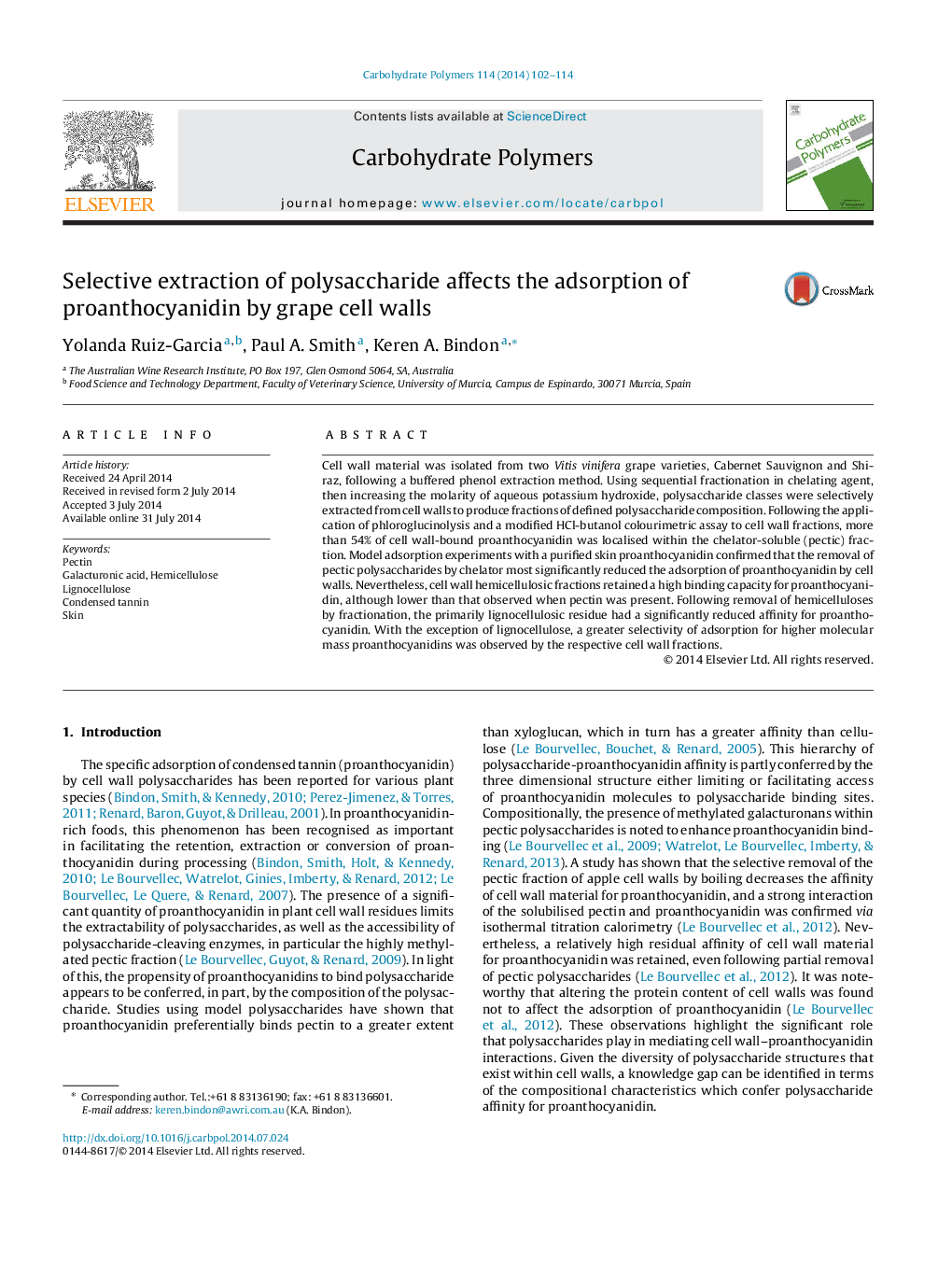| Article ID | Journal | Published Year | Pages | File Type |
|---|---|---|---|---|
| 7790349 | Carbohydrate Polymers | 2014 | 13 Pages |
Abstract
Cell wall material was isolated from two Vitis vinifera grape varieties, Cabernet Sauvignon and Shiraz, following a buffered phenol extraction method. Using sequential fractionation in chelating agent, then increasing the molarity of aqueous potassium hydroxide, polysaccharide classes were selectively extracted from cell walls to produce fractions of defined polysaccharide composition. Following the application of phloroglucinolysis and a modified HCl-butanol colourimetric assay to cell wall fractions, more than 54% of cell wall-bound proanthocyanidin was localised within the chelator-soluble (pectic) fraction. Model adsorption experiments with a purified skin proanthocyanidin confirmed that the removal of pectic polysaccharides by chelator most significantly reduced the adsorption of proanthocyanidin by cell walls. Nevertheless, cell wall hemicellulosic fractions retained a high binding capacity for proanthocyanidin, although lower than that observed when pectin was present. Following removal of hemicelluloses by fractionation, the primarily lignocellulosic residue had a significantly reduced affinity for proanthocyanidin. With the exception of lignocellulose, a greater selectivity of adsorption for higher molecular mass proanthocyanidins was observed by the respective cell wall fractions.
Related Topics
Physical Sciences and Engineering
Chemistry
Organic Chemistry
Authors
Yolanda Ruiz-Garcia, Paul A. Smith, Keren A. Bindon,
